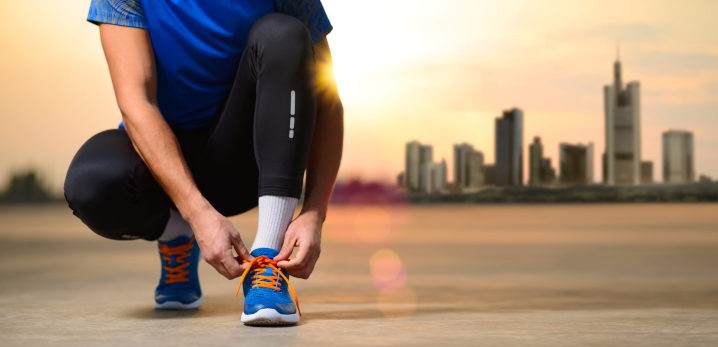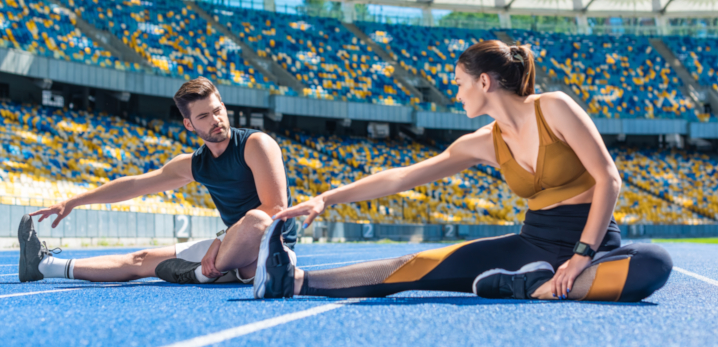Running shoes are a crucial investment for both casual joggers and dedicated marathoners alike. Proper care and maintenance, including caring for your running shoes, can significantly extend the lifespan of these essential footwear items, ensuring optimal performance and comfort throughout their use.
This blog post will provide essential tips and best practices for maintaining your running shoes, including caring for your running shoes, allowing you to protect your investment and enhance your running experience. Whether you are just starting your fitness journey or are a seasoned athlete, understanding how to care for your running shoes is vital for maximizing their durability and effectiveness.
Table of Contents
- Understanding the Importance of Shoe Maintenance
- Choosing the Right Running Shoes
- Daily Care Practices
- Storage Tips for Longevity
- When to Replace Your Running Shoes
- Additional Maintenance Tips

Understanding the Importance of Shoe Maintenance
The Impact of Worn Shoes on Performance
Worn shoes can significantly impact performance in various activities, including sports and daily exercise. As shoes age, their cushioning and support diminish, leading to increased fatigue and discomfort. This can result in reduced energy efficiency, altered biomechanics, and a higher risk of injury.
In sports, worn shoes may fail to provide adequate traction, compromising stability and speed. Athletes may experience decreased agility and overall performance due to the lack of proper support and shock absorption. Regularly replacing shoes ensures optimal performance and helps prevent injuries related to improper footwear.
Health Risks Associated with Neglected Footwear
Neglected footwear can pose several health risks, including:
- Foot Pain: Worn-out shoes can lead to inadequate support, causing discomfort and pain in the feet, arches, and heels.
- Blisters and Calluses: Poorly maintained shoes may cause friction, resulting in blisters and calluses, which can be painful and lead to infection.
- Increased Risk of Injury: Neglected footwear may lack proper cushioning and traction, increasing the likelihood of slips, trips, and falls.
- Foot Deformities: Consistently wearing improper footwear can contribute to deformities such as bunions, hammertoes, and flat feet.
- Poor Posture: Shoes lacking support can lead to poor alignment and posture, resulting in back, knee, and hip pain.
- Fungal Infections: Dirty and damp shoes can create an environment for fungi, leading to infections like athlete’s foot.
- Skin Irritations: Neglected footwear may harbor bacteria and dirt, causing skin irritations and infections.
Regularly checking and maintaining footwear can mitigate these risks and promote overall foot health.

Choosing the Right Running Shoes
Finding the Correct Fit
To find the correct fit when choosing running shoes, follow these steps:
- Measure Your Feet: Measure both feet while standing, as one foot may be larger. Use a Brannock device or a ruler.
- Consider Foot Shape: Determine your arch type (high, medium, low) and foot width (narrow, regular, wide). This will affect the shoe model you choose.
- Try on Shoes in the Afternoon: Feet tend to swell throughout the day. Try on shoes when your feet are at their largest.
- Wear Appropriate Socks: Bring the socks you intend to wear while running to ensure a proper fit.
- Check Length and Width: There should be about a thumb’s width of space between your longest toe and the end of the shoe. The shoe should fit snugly without pinching.
- Test the Fit: Walk or jog in the shoes. Ensure there’s no slipping at the heel and that the shoe supports your foot without causing discomfort.
- Assess Cushioning and Support: Ensure the shoes provide adequate cushioning and arch support based on your running style and preferences.
- Consider the Terrain: Choose shoes designed for the specific surface you’ll be running on (road, trail, or track).
- Consult Experts: If unsure, visit a specialty store where knowledgeable staff can help assess your gait and recommend options.
- Break Them In: Allow time to break in new shoes before going on long runs.
Materials and Design Considerations
When choosing the right running shoes, consider the following materials and design aspects:
- Upper Material: Look for breathable mesh or synthetic materials that provide ventilation and comfort. A snug fit helps prevent blisters.
- Midsole Cushioning: Choose a midsole made from EVA (Ethylene Vinyl Acetate) or polyurethane for shock absorption. Different brands offer varying levels of cushioning based on running style and preference.
- Outsole Durability: Rubber outsoles with strategically placed traction patterns enhance grip and durability. Consider carbon rubber for better wear resistance.
- Heel Drop: The difference in height between the heel and forefoot affects running mechanics. A higher drop (8-12 mm) is typically for heel strikers, while a lower drop (0-6 mm) suits forefoot or midfoot strikers.
- Arch Support: Assess your foot’s arch type (high, medium, low) to select shoes with adequate support. Some brands offer shoes specifically designed for each arch type.
- Weight: Lighter shoes can improve speed but may sacrifice cushioning. Balance your need for speed with comfort and support.
- Fit and Sizing: Always try on shoes with the socks you plan to wear while running. Ensure there’s enough room in the toe box and that the heel feels secure.
- Design Features: Look for features like reflective elements for visibility, water-resistant materials for wet conditions, and additional support for stability if needed.
Choose shoes that align with your running goals, terrain, and personal comfort preferences.

Caring for Your Running Shoes: Daily Care Practices
Cleaning Your Running Shoes
Cleaning your running shoes is essential for several reasons. It helps to maintain their appearance, which prolongs their lifespan. Dirt and debris can wear down the materials, affecting performance and comfort. Regular cleaning also prevents odors and bacteria buildup, promoting better foot health. Additionally, clean shoes provide better traction, reducing the risk of slips and falls.
Drying Techniques for Wet Shoes
- Air Drying: Remove insoles and laces. Place shoes in a well-ventilated area away from direct sunlight. Allow them to air dry completely.
- Newspaper Method: Stuff shoes with crumpled newspaper to absorb moisture. Replace the newspaper every few hours until the shoes are dry.
- Fan Drying: Position shoes in front of a fan for increased airflow. This speeds up the drying process.
- Dryer Method: Place shoes in a mesh bag and use the dryer on a low heat setting for 10-15 minutes. Check shoes frequently to avoid damage.
- Rice Method: Fill a container with uncooked rice and bury the shoes in it. Rice absorbs moisture effectively.
- Towel Method: Wrap shoes in a dry towel to soak up moisture. Replace the towel as needed until the shoes are dry.
- Boot Dryer: Use an electric boot dryer designed for drying shoes. This method evenly distributes heat and is efficient.

Storage Tips for Longevity
Proper Shoe Storage Environment
To properly store shoes and maintain their condition, follow these guidelines:
- Temperature: Keep shoes in a cool, dry place. Ideal temperatures are between 60°F and 75°F (15°C – 24°C). Avoid areas with extreme heat or cold.
- Humidity: Maintain a humidity level of around 40-60%. Use a dehumidifier or silica gel packs in damp environments to prevent mold and mildew.
- Light: Store shoes away from direct sunlight to prevent fading and materials from breaking down. A dark or dimly lit area is ideal.
- Airflow: Ensure good airflow around shoes. Avoid airtight containers unless using breathable materials, as this can trap moisture.
- Shelving: Use shelves or shoe racks to keep shoes organized and prevent them from getting crushed. Ensure they are at least a few inches apart.
- Original Boxes: If possible, store shoes in their original boxes for added protection. Label boxes for easy identification.
- Stuffing: Use shoe trees or stuffing (like acid-free tissue paper) to help maintain shape and absorb moisture.
- Cleaning: Clean shoes before storage to remove dirt, sweat, or oils that can degrade materials over time. Allow them to dry completely before storing.
Using Shoe Trees or Stuffing
Shoe trees and stuffing are effective tools for maintaining the shape and longevity of running shoes. Shoe trees, typically made of wood or plastic, help absorb moisture and maintain the shoe’s structure, preventing creasing and deformation. They can be inserted after each use to ensure the shoes retain their original form.
Alternatively, using stuffing such as newspaper or tissue paper can achieve similar results. Stuffing helps fill the toe box and prevent the upper material from collapsing, reducing wear and tear. For optimal results, it’s best to use these methods regularly, especially after intense workouts or runs. This practice not only extends the life of the shoes but also enhances comfort and performance during use.

When to Replace Your Running Shoes
Signs of Wear and Tear
- Uneven Tread Wear: Check the outsole for uneven wear patterns. If one side is more worn than the other, it may indicate issues with your running form.
- Loss of Traction: Inspect the tread pattern. If it appears slick or overly smooth, your shoes may not provide adequate grip.
- Visible Cracks or Separation: Look for cracks in the shoe material or separation between the sole and the upper. This can compromise support and cushioning.
- Decreased Cushioning: Press down on the midsole. If it feels hard or lacks responsiveness, it’s time for a replacement.
- Upper Material Degradation: Check the upper for signs of fraying, holes, or tears, which can lead to discomfort and instability.
- Heel Counter Damage: Feel the heel area. If it feels soft or collapses easily, the shoe no longer provides proper support.
- Increased Discomfort or Pain: Pay attention to any new aches or pains during or after runs, as this may indicate your shoes are no longer effective.
Regularly assess your running shoes for these signs to maintain optimal performance and prevent injury.
Understanding Shoe Lifespan Based on Mileage
To understand shoe lifespan based on mileage, consider the following:
- Running Shoes: Typically last 300-500 miles. Replace them if you notice reduced cushioning, uneven wear, or discomfort.
- Walking Shoes: Usually last 500-700 miles. Look for signs of wear on the outsole and changes in comfort.
- Trail Shoes: Generally last 400-600 miles. Monitor for loss of traction and support.
- Cross-Training Shoes: Average lifespan is 300-500 miles. Check for wear in the midsole and overall comfort.
Track your mileage using a running app or journal to determine when to replace your shoes.

Additional Maintenance Tips
Rotating Between Multiple Pairs
Rotating between multiple pairs of running shoes is crucial for several reasons. It allows for better cushioning and support, as different shoes have varying levels of wear and material responses. This rotation helps prevent injuries by reducing the risk of repetitive stress on the same muscle groups and joints. Additionally, alternating shoes can lead to improved performance, as each pair can provide unique benefits in terms of fit and feel. Regularly changing shoes also extends their lifespan by giving the materials time to recover between runs, ensuring optimal performance and comfort during workouts.
Using Protective Sprays and Treatments
Protective sprays and treatments for running shoes are essential for maintaining their performance and longevity. These products create a barrier against water, dirt, and stains, helping to keep shoes looking new and functioning optimally. They can also enhance breathability, preventing moisture buildup that can lead to odor and discomfort.
Additionally, protective treatments can improve traction by preventing debris from compromising the outsole. Regular application of these sprays ensures that shoes remain lightweight and comfortable, allowing runners to perform at their best. Investing in protective sprays extends the life of running shoes, making them a worthwhile addition to any runner’s gear.
Conclusion
In conclusion, adhering to the maintenance tips outlined in this post is essential for extending the lifespan of your running shoes. By regularly cleaning your shoes, allowing them to dry properly, and storing them in a cool, dry place, you can significantly enhance their durability and performance. Investing time in proper care not only ensures a more comfortable running experience but also maximizes the value of your footwear. By making these practices a part of your routine, you can enjoy the benefits of well-maintained running shoes for many miles to come.
(This content was created with the help of AI.)
You may also like:
